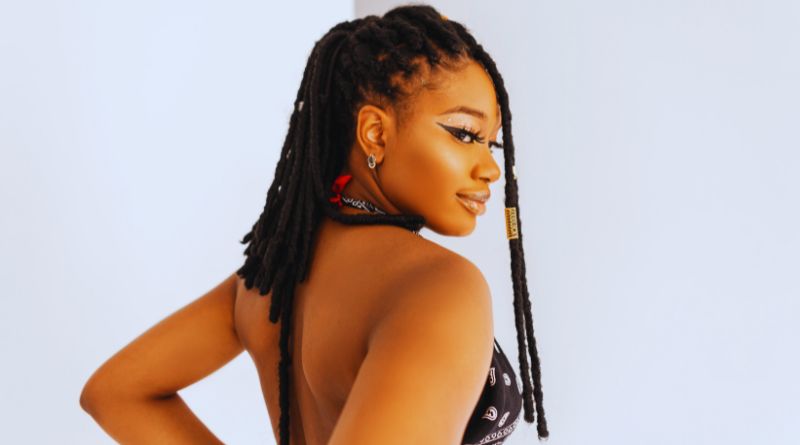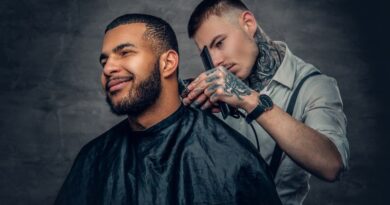Dreads are always a part of African culture; both women & men love to have dreads. Dreadlocks have been a part of various cultures for centuries, and they continue to be popular and unique hairstyle choices today. There are various methods, both natural & artificial, to get dreads/locs. Within the realm of dreadlocks, there are different approaches and techniques, including freeform dreads, semi-freeform dreads, and short freeform dreads. In this blog post, we will explore each of these styles, discussing their characteristics and the process of achieving them.
Whether you’re considering embracing the natural and carefree look of freeform dreads or opting for a more controlled version, there’s a dreadlock style to suit your preferences. So, let’s delve into the world of freeform and semi-freeform dreads, as well as short freeform dreads! One of the types to get dreads is freeform dreads, in which hair is naturally allowed to get locs without the use of any products & just normal braiding.
Freeform Dreads Afro are rocked by both men & women & they need a little effort to start growing naturally & later, one can style them.
This article will give info about freeform locs, semi-freeform dreads, how to get there, how to maintain them & moreover, and various styles of freeform dreads. So let’s get started!
What are Freeform dreads?
Freeform dreads are a type of dread that are allowed to grow naturally & require minimal effort. Freeform dreads can be in any size or texture, depending on the person’s type of hair. Both men & women can have freeform locs, as per the length they want.
It takes around five or six weeks to see the locs forming up & for the full dreads, it will require around one year. Moreover, one needs to get their hair braided first, into small braids & without the use of any product on them.
The small braids will help hair to get the space for naturally growing & expand into freeform locs over time.
What are Semi Freeform Dreads?
For those seeking freeform locs with a touch of styling and maintenance, Semi-Freeform Dreads offers the perfect balance. This style provides a more neat and clean appearance compared to fully freeform dreads. In semi-freeform locs the process involves parting the hair from the roots and creating small braids. The root parting not only adds structure to the locs but also facilitates easy and regular clean-up. This approach allows individuals to enjoy the organic beauty of dreads while incorporating a level of styling and control. Embrace the best of both worlds with Semi-Freeform Dreads, achieving a distinctive and personalized look that combines natural texture with a touch of structured elegance.
How long does it take for dreads to start locking?
The transformation from small braids to fully formed dreads typically takes around four to five weeks to start seeing noticeable progress. However, achieving the iconic dreadlock style akin to your favorite rapper’s may take one to two years, depending on your hair type. This extended period allows for the complete growth of hair into dreads, ensuring a locked and mature appearance from the roots to the ends. The slow and gradual process of dreading allows for the natural evolution of each loc, contributing to a unique and personalized look. Embrace the journey of patience and growth, witnessing your hair’s transformation into a distinctive and culturally rich style over the course of one to two years.
Also Read- Every type of Perm from Body Wave Perm to Straight Perm!
How to get Freeform Locs?
If you want to get freeform locs, then here is a simple step-by-step guide to it:
1) Wash & clean your hair
Prior to embarking on the Freeform Locs journey, it’s crucial to initiate a thorough cleaning process. Begin by washing your hair with a high-quality clarifying shampoo to eliminate any residues or impurities. Follow this with the application of a deep moisturizing conditioner to nourish the hair. After conditioning, allow your hair to naturally air-dry. This initial cleansing routine sets the foundation for healthy hair and promotes an optimal environment for the natural formation of locs. Embrace the importance of starting with clean, well-moisturized hair as you initiate the Freeform Locs process, laying the groundwork for a successful and vibrant dreadlock journey.
2) Part the hair into sections & install single braids.
Once your hair is dry, proceed to section it meticulously into small parts. Take care during this process to avoid incorporating hair from one section into another. Create small, single braids in each section, ensuring precision and care in their formation. The individual braids serve the purpose of helping the hair stay put and maintain a uniform structure. This careful and deliberate approach contributes to the overall neatness and consistency of the Freeform Locs as they begin to take shape. Embrace the art of sectioning and braiding as essential steps in the early stages of your Freeform Locs journey, laying the groundwork for well-defined and individualized dreadlocks.
3) Now, wait until the hair starts to form into natural braids
Once the braids are in place, patience becomes key in the Freeform Locs journey. During this waiting period, regular washing and moisturizing are essential. Utilize a high-quality deep conditioner to keep both the hair and scalp nourished and hydrated. Consistent moisturization aids in the natural formation of the loc. Expect to witness the braids transforming into locs in as little as four to five weeks. This waiting period allows the hair to naturally progress and evolve, leading to the distinctive and organic appearance characteristic of Freeform Locs. Embrace the gradual process, of maintaining a healthy hair care routine to encourage the formation of beautiful and individualized dreadlocks.
How to get Semi-Freeform Dreads?
Like the process of freeform dreads, the semi-freeform dreads involve just one more process. After washing the hair, just get the hair sectioned from the roots & and make the hair braids from the roots.
The semi-freeform dreads are neater looking & the hair is parted in a pattern to have the same size locs later.
It will be best to get the braids from a professional, as they will part the roots neatly & will braid hair equally.
How to maintain Freeform Dreads?
As you know, the hair needs to be given time to grow into dreads, but you will need to take care from time to time. First, you should check the roots & see if there is buildup, then clean your hair with a good cleanser. But don’t wash too frequently, just 1-2 times a week for the first 3-4 months.
You should also look at the roots & hair. If you see some strands coming out of the braid, then braid them again.
It would be best if you took the same care for the semi-freeform dreads.
What are the risks of freeform locs?
The primary risk associated with Freeform Locs and Semi-Freeform Locs lies in the potential for breakage if re-twisted too tightly. Therefore, it’s crucial to avoid excessive tension while making the initial braids.
Since the philosophy behind these styles involves allowing your hair to naturally form, there are fewer chances of breakage occurring. By letting your hair do its own thing and refraining from overly tight twists, you minimize the risk of stress-induced breakage, promoting a healthier and more sustainable journey in achieving unique and natural-looking locs.
Embrace the freedom of these styles while exercising caution to ensure the longevity and vitality of your Freeform or Semi-Freeform Locs.
Freeform Dreads Styles for Women
Here are different freeform dread styles for women-
1) Textured Freeform Dreads
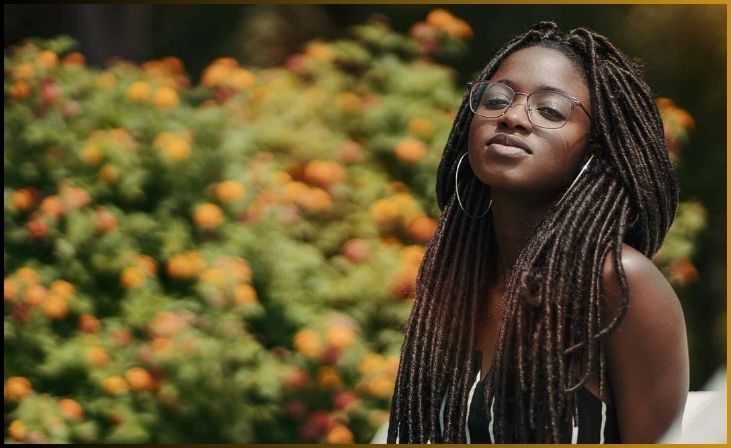
The style of your dreadlocks can be influenced by your hair type, with the resulting texture varying accordingly. The size of the dreads contributes to the overall appearance, with thick and fluffy locs offering a distinct look. However, such locs require proper care to prevent frizziness. Regular maintenance is key to keeping them neat and well-defined. By avoiding frizz and implementing a consistent care routine, you’ll witness the development of a unique and well-maintained dreadlock style that complements your hair type and enhances your overall look. Embrace the individuality that comes with different hair textures and dread sizes, ensuring they remain a distinctive and well-cared-for expression of personal style.
2) Medium Freeform Dreads

Dreads with a medium texture offer a visually appealing and versatile style that is easy to manage. Striking a balance between too-thin and too-thick locs, medium-sized dreads provide just the right amount of texture. They present a desirable middle ground, catering to those who seek a more textured look without the complexities associated with thin locs or the maintenance challenges of thick loc. This versatility allows individuals to achieve the desired level of visual interest while ensuring a manageable and well-maintained appearance. Embrace the ease and aesthetic appeal of medium-textured dreads, finding a harmonious balance that aligns with your preferences and styling preferences.
3) Flowing Dreads
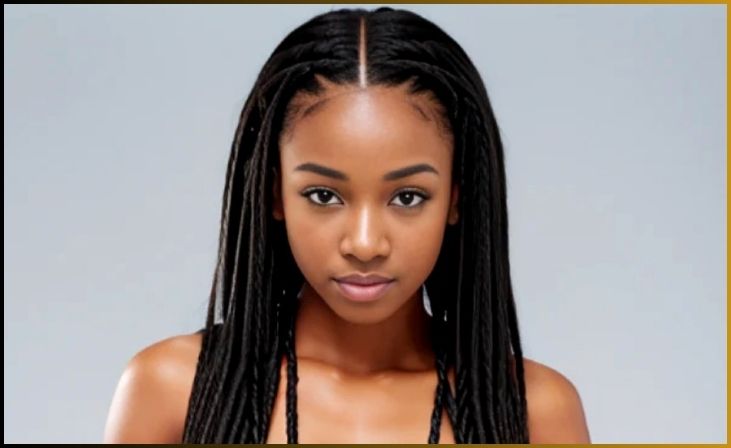
Embrace the charm of a relaxed freeform style, effortlessly capturing attention with its simplicity and power. This look offers a versatile and easy-to-love aesthetic that complements various occasions. Elevate the style by incorporating a bandana and/or jewelry, transforming the hairstyle into an eye-catching and personalized statement. The addition of accessories allows you to showcase the unique character of your locs while infusing a touch of individuality. This simple yet powerful approach to styling reflects a carefree and expressive vibe, making it an ideal choice for those who appreciate both ease and impact in their hairstyles. Embrace the creative possibilities of accessorizing, enhancing the appeal of your locs with a distinctive and eye-catching flair.
4) Spiky Textured Dreads
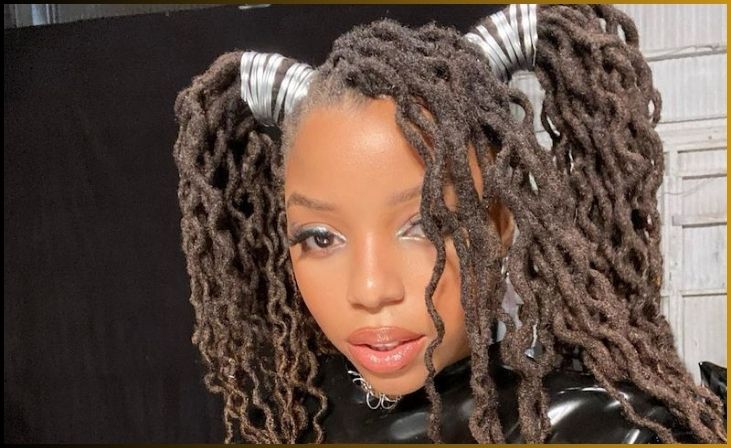
Freeform locs may naturally evolve into large and spiky formations, showcasing a personality-rich and unique hairstyle. This style often takes on a dynamic appearance, with locs going in various directions, contributing to a distinctive and expressive look. The inherent unpredictability adds character and charm to your hair, embracing a carefree and individualized vibe. To enhance the style further, explore different styling possibilities by tousling your locs, allowing for creative expression and versatility in your overall look. Embrace the freedom and creativity that come with large and spiky freeform locs, turning your hair into a canvas for personal expression and unique styling options.
5) Extreme Long Locs
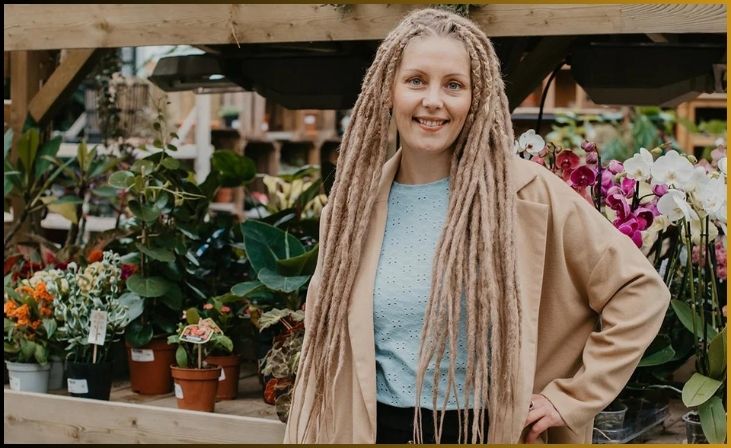
With dedicated care spanning over an extended period, such as 3-4 years, you have the opportunity to grow your dreads to a considerable length. This extended timeframe allows the locs to mature and develop, resulting in a truly great and beautiful appearance. Proper care involves regular maintenance, washing, and moisturizing to ensure the health and vitality of your dreadlocks. As the dreads grow, they acquire a unique and stunning texture, enhancing their overall aesthetic appeal. Embrace the patience and commitment required for long-term dread care, and you’ll be rewarded with a captivating and beautiful hairstyle that reflects both your dedication and individuality.
Freeform Dread Styles for Men
Here are different styles & forms of freeform dread that men can try:
1) Voluminous Freeform Dreads
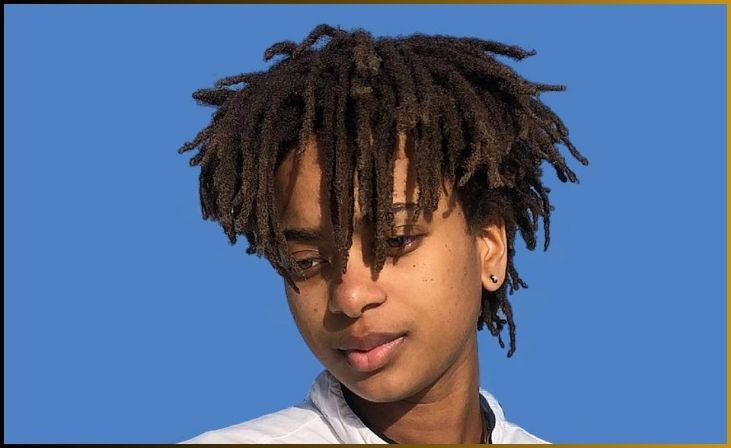
Achieving a high-volume dread style for men requires a patient commitment, typically taking 1-2 years to form this voluminous freeform loc look. The process involves allowing your hair to naturally develop into thick and textured dreadlocks. To enhance the overall appearance, it’s beneficial to have shiny and textured hair, as it contributes to the richness and depth of the dreadlocks. This style thrives on the natural texture of the hair, creating a high-volume and visually striking effect. Embrace the journey of cultivating voluminous freeform locs, acknowledging the time investment and the beauty that comes with the unique texture and volume of this particular dread style.
2) Sparse Medium Dreads
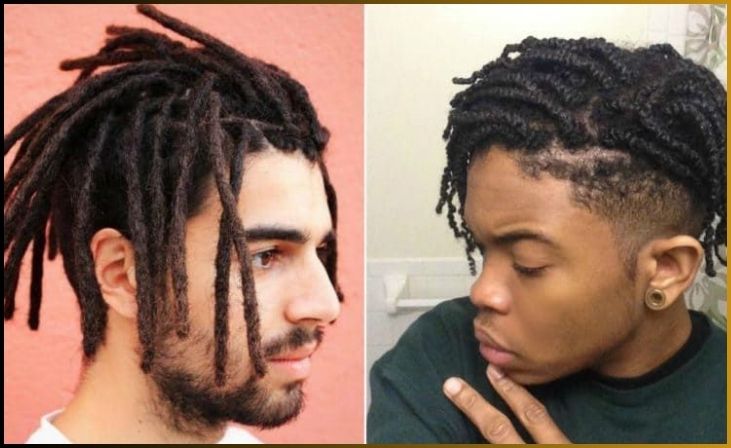
Explore the appeal of slightly larger locs with these medium freeform dreads. While not enormous, these dreads strike a balance, showcasing the texture of the hair in a distinct and textured manner. On the larger side, these locs offer a good option for those who prefer a looser and more relaxed look. The medium size allows for a versatile style that embraces a natural and carefree vibe. These dreads provide an alternative aesthetic, allowing individuals to enjoy the benefits of freeform styling while opting for a slightly larger and laid-back appearance. Embrace the diversity of medium freeform dreads, celebrating the unique texture and individuality they bring to your overall hairstyle.
Also, Read- 25 Cute Hairstyles For Various Types Of Hair!
3) Blooming Dreads
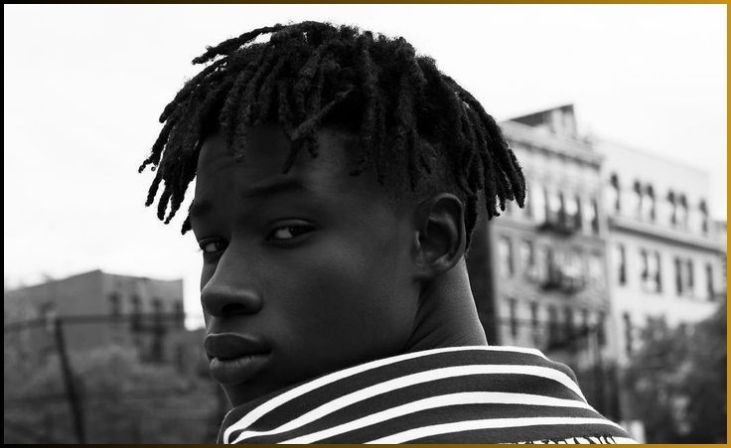
Contrary to initial perceptions, the first year of your loc journey doesn’t limit your styling options. Embrace the versatility of a wild and expansive look, where short, thin dreads appear surprisingly full, challenging any notion of limitation. This style not only defies expectations but also accentuates the texture and character of the locs, creating a visually striking and dynamic appearance. The journey of short, thin dreads transforms into a showcase of fullness and individuality. Explore the freedom and creativity available even in the early stages of your loc journey, letting your unique style shine through with the wild and expansive look.
4) Shoulder Length Dreads

After three years of dedicated development, the dreadlocks have evolved into thick, full strands, showcasing the hair’s adaptation to its unique growth pattern. The extended period has allowed for a seamless transition, resulting in a nice balance between volume and manageability with these medium-sized locs. The maturity of the dreadlocks not only emphasizes their thickness but also highlights the rich texture of the hair. This balance contributes to a visually appealing and manageable hairstyle that reflects the commitment to the loc journey. Embrace the culmination of three years’ growth, achieving a distinctive and textured look that strikes the perfect equilibrium between volume and ease of maintenance.
5) Short Dreads

Get a glimpse of the early stages of loc growth with this 14-month growth chart, showcasing lengths ranging from 2 to 4 inches. While not classified as microlocs, these locs are relatively small, highlighting the initial phase of the loc journey. The growth varies depending on individual hair types and natural growth rates. This diverse range of results emphasizes the uniqueness of each person’s local journey and showcases the potential for a variety of styles even in the early stages. Explore the possibilities and embrace the individuality of your loc growth, recognizing that the outcome will be influenced by your hair type and its natural growth pace.
Bottom Line
Freeform dreads, semi-freeform dreads, and short freeform dreads offer unique and individualized approaches to the popular dreadlock hairstyle. Whether you’re drawn to the natural and carefree aesthetic of freeform dreads, prefer a combination of freeform and maintained locks with semi-freeform dreads, or want to embrace the style with shorter hair, there’s a dreadlock option for you. Remember, the key to maintaining these styles is to embrace minimal manipulation and adopt a more relaxed approach to maintenance. So, go ahead and explore the world of freeform and semi-freeform dreads to find the perfect style that reflects your individuality and celebrates the natural beauty of your hair!
This was all about freeform dreads & semi freeform dreads. We tried our best to include all the information about these in our article. We hope you found this article informative & helpful.
Let us know your thoughts & recommendations in the comments below!
Thank you for reading!
FAQs
Freeform dreads, also known as neglect dreads, are cultivated without any interference or specific styling. This method allows the hair to naturally form into individual dreadlocks over time, embracing an organic and unique aesthetic that reflects the individual’s hair texture and journey.
Semi-freeform dreads involve a bit more maintenance and shaping than fully freeform dreads. While allowing some natural locking to occur, individuals may choose to separate or twist sections to guide the dreading process. This approach offers a balance between a more controlled look and the spontaneity of freeform styles.
Short freeform dreads can be adapted to various hair types, but they often work exceptionally well for individuals with coarser or textured hair. The shorter length provides a manageable and stylish option, allowing for a bold statement without the length associated with longer dreadlocks.
Caring for freeform dreads involves regular washing with residue-free shampoos, separating any conjoined dreads gently, and avoiding excessive manipulation. Embracing the natural texture of your hair is key, and occasional maintenance from a professional can help tidy up the overall look while preserving the organic beauty of freeform dreads.

